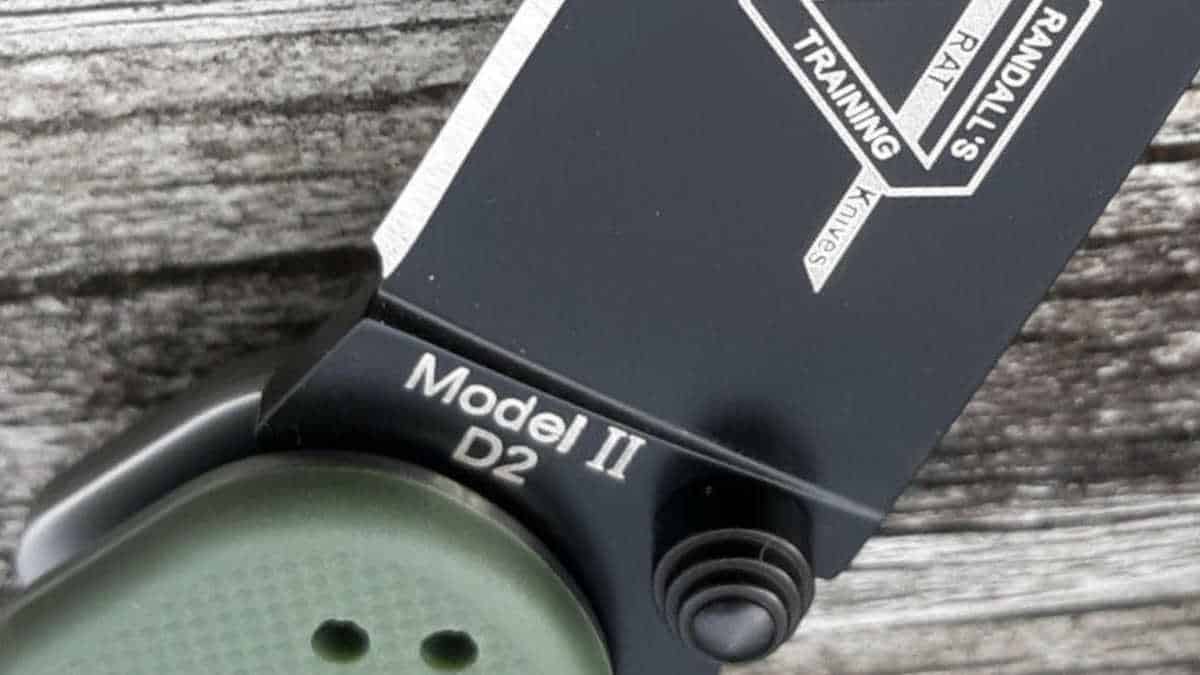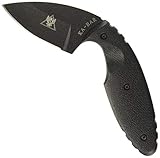When you visit a merchant by clicking a link on this site we may make a commission on anything you buy (at no additional cost to you). Affiliate programs and affiliations include, but are not limited to Amazon Associates and the eBay Partner Network.”
At A Glance
D2, a high carbon, high chromium tool steel known for its hardness and decent corrosion resistance, holds an edge longer but may be more prone to chipping and rusting. On the contrary, AUS-8, a popular Japanese stainless steel, offers a balanced blend of toughness, sharpness, and corrosion resistance and is relatively easy to sharpen. Although D2 is generally more expensive, AUS-8 provides decent performance for its price and is common in budget knives. The choice between these two ultimately depends on the intended use of the knife and user preference.
Top Rated Knives
D2 Steel
AUS 8 Steel
Blade steel is a crucial factor to consider when selecting a knife. D2 and AUS-8 are two common blade steels that are often put into comparison. This article will evaluate D2 and AUS-8 concerning their composition, hardness, toughness, corrosion resistance, edge retention, and ease of sharpening to ascertain which one is superior for knives.
The realm of knife-making materials can be intricate, both for the seasoned enthusiast and those new to the scene.
To aid in the understanding of this subject, this article will provide a comprehensive comparison between two widely used knife steel types: D2 and AUS-8.
We’ll assess their composition and grade them on factors such as hardness, toughness, corrosion resistance, edge retention, and ease of sharpening to determine which one is better suited for knives.
Steel Background
Before proceeding to the comparison, it’s essential to comprehend what each steel type is and how they are fabricated.
D2
D2 is a high carbon, high chromium tool steel often referred to as “semi-stainless” as it falls just short of the required amount of chromium (13%) to qualify as full stainless. D2 is recognized for its high hardness and adequate corrosion resistance. It has been in use for a long time and is popular among both custom knife makers and large production companies.
AUS-8
AUS-8 is a popular Japanese stainless steel with good toughness, sharpness, and corrosion resistance. It’s a middle-of-the-road steel that is commonly used in budget knives but offers decent performance for its price point.
Steel Composition
The first point of comparison is the chemical composition of each steel.
D2
- Carbon: 1.5%
- Chromium: 12%
- Molybdenum: 1%
- Vanadium: 1%
- Manganese: 0.6%
- Silicon: 0.6%
- Iron: Balance
AUS-8
- Carbon: 0.75%
- Chromium: 14.5%
- Molybdenum: 0.3%
- Vanadium: 0.25%
- Manganese: 1%
- Silicon: 1%
- Nickel: 0.49%
From the composition, we see that AUS-8 has a lower Carbon content but more Chromium than D2, contributing to its superior corrosion resistance but lower hardness.
D2 vs AUS-8 – Complete Comparison
Hardness
Hardness plays a critical role in knife steel as it directly affects edge retention and wear resistance.
D2, with a Rockwell hardness (HRC) of 55-62, is one of the hardest steels available. It offers good wear resistance and can hold an edge for a long time.
On the other hand, AUS-8, with a Rockwell hardness (HRC) of 57-58, is softer than D2. This means it may not hold an edge as long as D2, but it’s easier to sharpen.
Toughness
Toughness pertains to a steel’s ability to resist chipping and breaking under use.
D2 is known for its hardness, but it can be more brittle than AUS-8 and may chip under heavy use.
AUS-8 is renowned for its toughness. It is less likely to chip or break compared to D2, making it a good choice for heavy-duty use.
Corrosion Resistance
Corrosion resistance determines how well a steel can resist rust and oxidation.
D2 offers decent corrosion resistance but is not as corrosion-resistant as AUS-8. It requires more maintenance to prevent rust.
AUS-8, with its higher chromium content, offers excellent corrosion resistance, outperforming D2 in this aspect.
Ease of Sharpening
Ease of Sharpening signifies how easy the steel is to sharpen with normal methods. It usually correlates inversely with edge retention and hardness.
D2, due to its high hardness, can be challenging to sharpen, although it holds an edge for a long time.
AUS-8 is easier to sharpen because of its lower hardness. This makes it a good choice for those who need to frequently sharpen their knives.
Edge Retention
Edge retention refers to how well a steel maintains its sharpness during use.
D2 offers excellent edge retention thanks to its high hardness and carbon content. However, it can be more prone to chipping compared to AUS-8.
AUS-8 offers decent edge retention, although not as good as D2 due to its lower hardness. However, its softer nature makes it easier to sharpen.
Price
D2, being a high-carbon, high-chromium tool steel, is generally more expensive than AUS-8.
AUS-8 is a more affordable option and is commonly used in budget knives. However, its performance is decent for its price.
Conclusion
Both D2 and AUS-8 are excellent blade steels, each with its unique strengths and weaknesses. D2 is harder and offers superior edge retention but can be more prone to chipping and rusting. It is best suited for knives that need to hold an edge for an extended period and are not subjected to heavy-duty tasks.
AUS-8, on the other hand, offers a good balance of toughness, sharpness, and corrosion resistance. It’s less likely to chip or rust compared to D2 and is relatively easy to sharpen. It’s an ideal choice for general-purpose knives and those used in various environments.
Ultimately, the choice between D2 and AUS-8 will hinge on the intended use of the knife and the user’s preference. Both steels are great choices for knives and are popular among knife makers and manufacturers. Choosing a reputable brand and manufacturer ensures the blade steel’s quality and that it has been properly heat-treated.
Do Sheepsfoot Blades Have A Purpose? (Cuz They’re Ugly…)
Spetsnaz Machetes – Blades Of The Russian Special Forces
What Is The Actual Purpose Of A Spear Point Knife Blade?
CRKT CEO Review – Coolest, Most Worthless Knife Ever?
How Sharp Is A Scalpel? (Is It Sharper Than A Razor?)
Can You Shave With A Knife? (Yes, Here’s How)
When you visit a merchant by clicking a link on this site we may make a commission on anything you buy (at no additional cost to you). Affiliate programs and affiliations include, but are not limited to Amazon Associates and the eBay Partner Network.”













